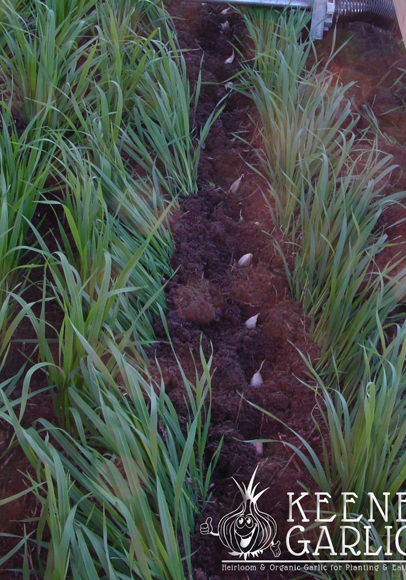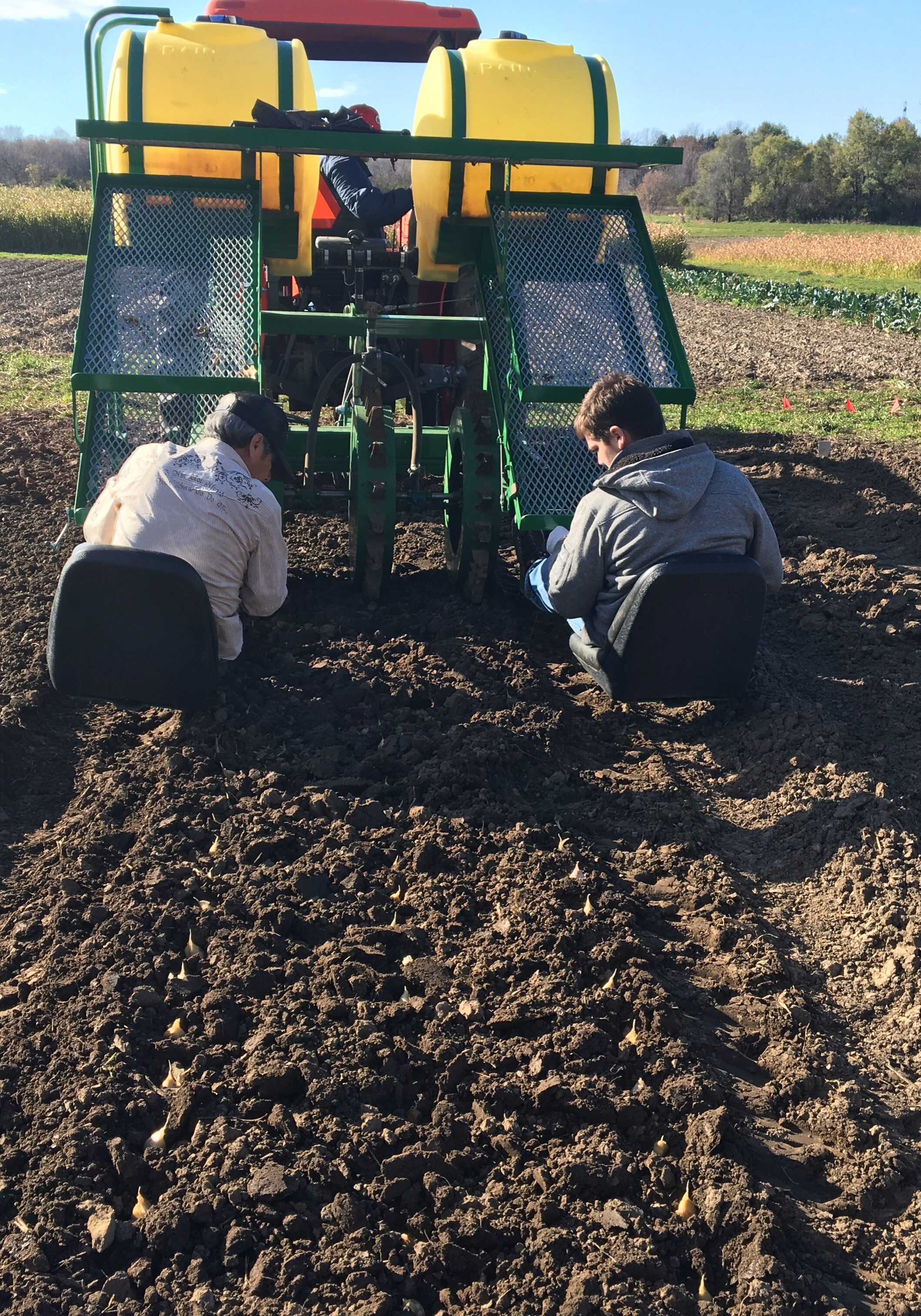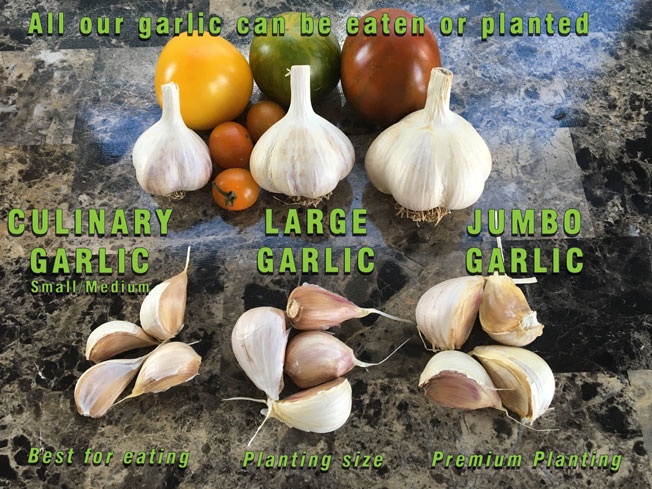Many gardeners like to get a head start on the growing season by planting garlic in spring. However, garlic is traditionally planted in fall since the cloves require a cold treatment known as vernalization before sprouting. This cold period mimics winter conditions and encourages proper growth and bulb formation.
When planting garlic in spring, the cloves miss out on the natural vernalization that would occur when left in the ground over winter So for best results, spring-planted garlic may need to be pre-treated in cold conditions before planting. A common question is whether putting garlic in the freezer can provide the cold exposure needed
Why Garlic Needs Vernalization
Garlic is a biennial crop, meaning it takes two years to complete its lifecycle from clove to mature bulb. The first year, the planted clove produces vegetative leaf growth and roots. It does not form a bulb.
The second year, after exposure to cold winter temperatures, the clove sprouts again, producing a flowering stalk (scape) and bulb. The cold period allows the plant to transition from vegetative to reproductive growth.
This cold requirement prevents the garlic from sprouting in fall and being damaged by winter conditions It ensures the plant waits until the next spring to send up new growth.
When garlic is planted in spring, it misses out on this cold vernalization period and may not form proper bulbs or cloves at harvest. The foliage simply keeps growing in a vegetative state rather than switching to reproductive bulb production.
Using Refrigeration to Vernalize Garlic
To mimic winter cold and vernalize spring-planted garlic, the cloves can be pre-treated by storing in cold conditions before planting. Refrigeration at temperatures between 32-50°F (0-10°C) for 4-8 weeks is commonly used.
The refrigerator provides consistent cold but above freezing temperatures that signal to the garlic it’s time to prepare for spring growth. Keep the cloves in a breathable bag or container and out of the crisper drawer.
Check frequently that sprouting hasn’t started yet. Plant the pre-chilled cloves as soon as possible once removed from refrigeration. The goal is to properly vernalize the garlic while preventing it from actually sprouting before planted.
Is the Freezer Too Cold for Vernalizing Garlic?
Home freezers are typically set to 0°F (-18°C) or below. These very cold temperatures can damage cloves rather than properly vernalizing them. Freezing may kill the growth point of the clove or harm the embryo before it has a chance to grow.
One study tested storing garlic bulbs for up to 8 weeks in -4°F (-20°C) temperatures before planting. Nearly half the cloves showed damage from the freezing temperatures after 8 weeks of storage.
Shorter durations of 2-4 weeks had less impact on viability but did reduce sprouting and growth compared to unfrozen controls. The researchers concluded that storing garlic at -4°F or below causes injuries that inhibit plant development.
While refrigerator temperatures provide ideal vernalization, freezer temperatures seem too extreme for pre-treating garlic effectively. The very cold can harm or kill the cloves. Even at slightly warmer freezer temperatures around 15°F (-9°C), damage is likely over extended durations.
Other Ways to Vernalize Garlic for Spring Planting
If storing garlic in the freezer doesn’t seem advisable, here are a couple other vernalization options for spring planting:
-
Plant very early – In areas with very cold winters, planting the garlic cloves very early in spring while ground temperatures are still freezing provides natural vernalization. Ensure the soil is workable and not frozen solid before planting.
-
Outdoor cold exposure – Keep the bulbs or separated cloves in an unheated garage, shed, or buried in the garden over winter. This exposes them to natural chilling hours. Check frequently for sprouting or rotting.
-
Buy pre-chilled garlic – Some garden centers and nurseries sell “spring garlic” that has already been pre-treated and is ready for early spring planting.
With the right vernalization treatment before planting, you can fool your spring-planted garlic into forming nice big bulbs in time for summer harvest. Just avoid prolonged freezer storage, as the extreme cold can kill cloves rather than vernalizing them properly. Stick to refrigeration or early spring planting for best results.
Growing Big Spring Garlic Bulbs
Here are some other tips for a successful spring garlic crop:
-
Choose large cloves – Large cloves have more energy stores to fuel growth. Size matters!
-
Plant early – Don’t wait! Plant the pre-chilled cloves as soon as the soil can be worked in spring.
-
Choose varieties suited for spring planting – Softneck, Creole, and Silverskin types need less vernalization than hardneck garlic.
-
Provide plenty of sunshine – At least 6 hours per day. Morning sun is ideal.
-
Use raised beds – Improves drainage and warms the soil. Prevent soggy conditions.
-
Add organic matter – Mix in compost and aged manure to enrich the soil with nutrients.
-
Fertilize – Use a nitrogen-rich fertilizer at planting and again when shoots are 6 inches tall.
-
Mulch – Once sprouted, add 3-4 inches of straw or leaves to retain moisture and heat.
-
Ensure consistent moisture – About 1-2 inches of water per week. More for sandy soils.
Follow these tips and your spring-planted garlic should grow large, healthy bulbs. Just leave the freezer out of your vernalization plans!
Planting into Frozen Ground
Garlic can be planted into the frozen ground, but it will be a miserable task. Most believe some garlic is better than no garlic. If you plant it too late, it should still grow into a great plant, but the clove might not have enough time to get roots and become rooted in the soil, which could cause it to get hurt over the winter and heave out of the ground in the spring. Many, many garlic growers plant late successfully, so give it a try. Try to soak your cloves for faster rooting, and mulch the garlic well for a better success rate.



When to Plant Garlic
Plant garlic about 6 weeks prior to the ground freeze. In the Northern States, the best time to plant is about the 2nd week of October. The middle to southern sections of the US can plant later than Mid October.
Garlic can be planted into frozen ground and usually does well. If you wait too long to plant in the fall, you should plant garlic instead. It is very hardy and usually grows into nice garlic bulbs.
It was always thought that planting too early was bad because making a sprout wastes the plant’s energy. A lot of growers are finding that planting in late September in northern states is the best time because the garlic will root down and the sprouts will get chlorophyll from the sun, which will feed them and help them grow strong roots. During the cold winters in the northern states, the fall green spouts and leaves will fall off. But, they will grow back in the spring and make great garlic plants. We are finding that bulb size can even be larger with an earlier plant date. Experiment with your garlic to see if there is a difference. We love to hear your results!.
Planting GARLIC in SPRING after being kept in the Freezer
How do you plant garlic?
To plant garlic, start by separating the garlic bulbs into individual cloves, leaving the papery layer around each clove intact. Choose the largest cloves for planting and use the smaller ones for cooking or preserving. Dig holes in the ground that are around 2 to 3 inches deep to plant your garlic cloves. Space holes 4 to 6 inches apart.
How do you plant garlic in the fall?
To plant garlic in the fall, first prepare your planting bed. Next, break the bulb up into cloves, making sure not to remove the paper on the individual cloves. Plant the cloves in a planting area that gets at least 5+ hours of sun. Garlic in very warm areas may benefit from late afternoon shade.
How do you store garlic?
Store garlic for planting at 30°F (-1°C) in a well-ventilated area. Keep the humidity level between 65 and 70 percent. Cure the bulbs, check them for damage, and then select the biggest cloves to prepare for the storage process. Garlic will stay good for 9 months when stored properly. Store garlic at 30°F (-1°C) and 65–70 percent humidity.
Should garlic be refrigerated before planting?
Chill the garlic cloves in the fridge for a couple of weeks before planting. This improves bulb development and helps you harvest large bulbs. However, this step can be skipped if you aren’t concerned with bulb size and live in a cold climate.
- The Ultimate Guide to Growing Strawberries in Raised Beds - August 8, 2025
- No-Dig Garden Beds: The Easiest Way to Grow a Beautiful Garden - August 6, 2025
- How to Protect and Preserve Wood for Raised Garden Beds - August 6, 2025

